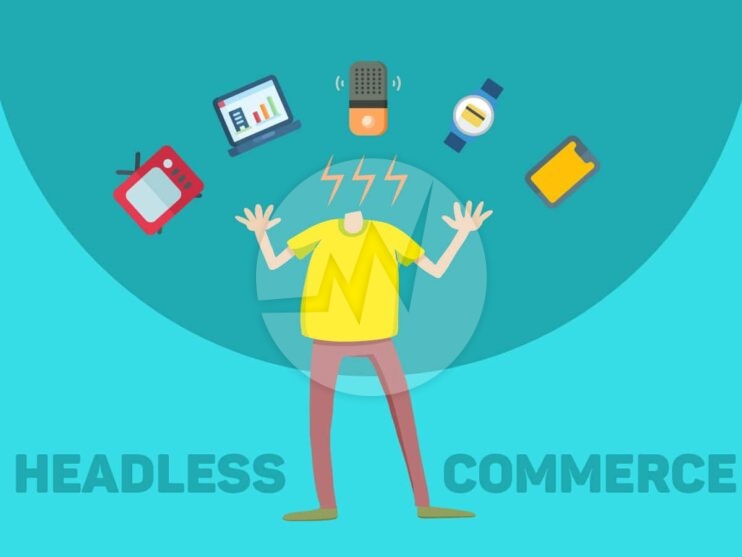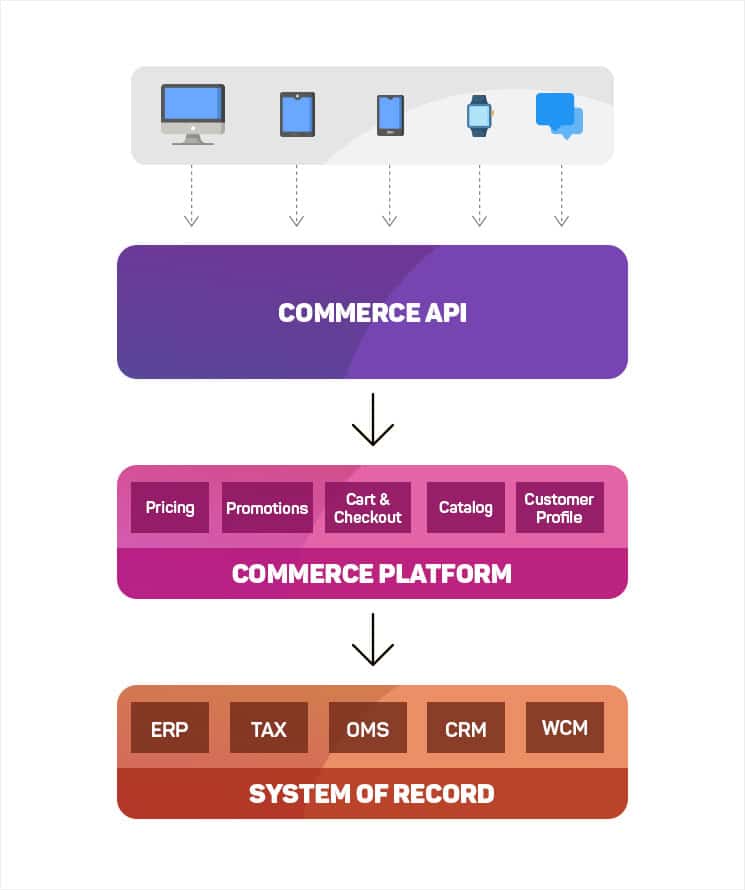How Headless Commerce is the best compared to Traditional Open Source B2B Ecommerce Platform?

Headless commerce is the technology of the hour. If you want to be well positioned in future B2B trade, you have to deal with the question of which devices, channels and operating concepts will play a role in the future. But there are already concrete applications. We explain what headless commerce means and in which scenarios it makes sense.
Why do B2B retailers need headless commerce? The most important promise of headless commerce is to make the online shopping cart particularly flexible. This enables dealers to deal with each channel separately.
With headless commerce, every channel gets a tailor-made front end. This does not have to be limited to the ecommerce surface, the user guidance and the operating concept can differ depending on the platform or device. Combined with personalization and a headless CMS, retailers can even play the products and content individually on each channel.
Headless Commerce vs. Traditional Ecommerce platform
In contrast to the headless commerce, the classic ecommerce platform maps the entire functionality and appearance of the website: in the backend, the software manages the products and customer data and processes orders. The software displays interface so that the customer can order in the ecommerce. The integrated front end of the software is typically designed to deliver a well-functioning desktop and mobile version of the online shopping cart.
But it doesn’t always have to be that the ecommerce is used and displayed in a certain way in the browser. In times of the Internet of Things and social media, the variety of devices, channels and thus also usage preferences and operating concepts is increasing. Even B2B buyers are already using an average of six channels today.
Channels & Scenarios for headless commerce:
- Online Shopping Cart
- Website
- Mobile website / PWA
- Social media
- Online Store / POS (point of sale)
- Marketplaces
- Multistore Platforms
- Multibrand Ecommerce
- Individual Country Ecommerce
- Internet of Things
- Voice Commerce
- Conversational Commerce / Chatbots
How Headless Commerce works?
In order to achieve more flexibility and make the ecommerce future-proof, a headless architecture backend and front end of the ecommerce application are separated. But what does that mean? The software no longer provides all the functions of an ecommerce application as a large overall package. Instead, it provides its core function, order processing, in the backend. The front end for the customer is developed separately and specifically for the customer’s usage situation such as the device or channel. On the other hand, the processes from business applications are also connected to the controlling ecommerce software via interfaces.

In this context, one also speaks of decoupled systems. With headless commerce, the individual areas of an ecommerce system are decoupled. This enables a company to view each channel individually. Using optimized front ends, retailers integrate data and functions and can adapt or expand them at any time if necessary.
Why the API and Interfaces are so important?
Interfaces, i.e. application programming interfaces (API), are the link of a headless ecommerce. They are used to call up the desired functionality from the ecommerce backend, to exchange data and ultimately to offer the customer an outstanding user experience.
A headless commerce also communicates reliably with the company’s internal systems via standard interfaces. For example, the queries customer-specific prices in real time from the ERP system. The customer data comes from the CRM, the PIM supplies the product data and the CMS the content. The ecommerce software is the central exchange through which all inquiries and data run.
It is important that the interfaces are well defined, standardized and well documented. This ensures that the APIs provide developers with a set of powerful tools that avoid familiarization with complex systems and many dependencies. If the API is well thought out, retailers also achieve high performance and security for the entire ecommerce application. For this reason, a REST API is often used in headless systems, which is based on standardized processes.
What is API-first and microservices? How did it work for headless commerce?
With an API first strategy, this principle of headless commerce is consistently implemented. At API-first, an interface is first defined for each function. The ecommerce software is as lean as possible. A developer can use the functions in ecommerce applications via the standardized interface.
From Micro Services is called whenever for each small section of an ecommerce application – a small, manageable application is programmed – functions, processes, individual tasks. The sum of the microservices then results in the ecommerce application.
The difference to the classic ecommerce system is not noticeable for the customer, but for the developers there are advantages in headless commerce. The microservice approach reduces complexity because each microservice just does one task. In addition, the microservices can be exchanged very easily. Thanks to the standard interfaces, they can also be created independently of each other by different development teams.
How to switch ecommerce platform as a headless commerce?
API-first and microservices are a modern approach, but also mean a radical change in the development of ecommerce projects. This contrasts with the classic ecommerce platforms, which already master all typical tasks in ecommerce with on-board equipment, but are sometimes not flexible enough. Is there a middle ground between headless commerce and a monolithic ecommerce platform?
There is definitely an approach in which the ecommerce platform and headless commerce can be combined. With ecommerce software that has intelligent interfaces, retailers can switch parts of their B2B online shopping cart to headless commerce if necessary. New areas can be added step by step. This enables a smooth changeover.
9 Best Reasons to Switch to Headless Commerce!
There are several scenarios in which the use of headless commerce already makes sense today in B2B trading:
- Sustainable architecture: A more flexible ecommerce allows you to react very quickly to new challenges or changed usage habits of the target group.
- More Personalization: Headless architecture is a good foundation for personalized customer experience. In addition to individual frontends, content and products can be played to match the channel.
- International Ecommerce: If international ecommerce store is operated, then headless commerce gives the country ecommerce more control options. Nevertheless, they can access the data and functions that the control centre provides.
- Multistore / Multibrand Ecommerce: Even in multistore and multibrand ecommerce, it can make sense to play out individual front ends, products and content for each ecommerce from a central system using headless commerce.
- Better Performance: Lean, headless ecommerce infrastructures and data exchange via standard interfaces enable high-performance ecommerce applications.
- Less Complexity: Comprehensive ecommerce applications can be broken down and simplified into manageable parts. Dependencies and unwanted interactions with changes that occur in complex environments are avoided.
- Integrate Business Processes: A strong focus on standardized interfaces makes it easier to integrate business processes from systems such as ERP, PIM, CMS and CRM.
- Adjustment Costs: Dealers avoid high follow-up costs for development projects in which only a sub-area is actually to be changed. Here, the entire ecommerce platform does not have to be reconsidered and possibly converted.
- Shorter Project Times: The project times, for example with redesigns or new functions, are shorter. Sub-tasks as well as changes in the frontend and backend can be transferred to different development teams.
Sustainable architecture
More Personalization
International Ecommerce
Multistore / Multibrand Ecommerce
Better Performance
Less Complexity
Integrate Business Processes
Adjustment Costs
Shorter Project Times
However, especially with the last two points, retailers have to consider that the introduction of a headless system will initially be more complex and therefore also more expensive. After all, the front ends have to develop first. The interfaces must also be programmed first. The savings in time and money only become noticeable with adjustments and extensions.
Conclusion
B2B retailers who now rely on headless commerce well equipped for the future. Regardless of which channels and devices the customers will populate in a few years, a decoupled system adapts and can quickly expand with suitable front ends and operating concepts.
Online shopping carts are already benefiting from the diverse options that result from the decoupling of their ecommerce infrastructure. In combination with personalization, unique customer experiences created with exactly the right content and products per channel. There are also better control options in international business and on complex dealer platforms.
Retailers do not have to rely entirely on an API first concept and implement all headless commerce functions with microservices. You can also decouple individual areas of your B2B ecommerce. This has a positive effect on the complexity and makes maintenance of individual segments easier. It is important to have clean interfaces that form the basis for any further development of the ecommerce.
If you are looking for a Ecommerce Website Development, Shopping Cart Development, Online Store Development and Web Application Development, Please Explore our Ecommerce Solutions! We also provide Ecommerce Website Maintenance Services, Online Store Maintenance Services and Web Application Security Audit. For More Information, Please Visit Our Website Maintenance Services!



